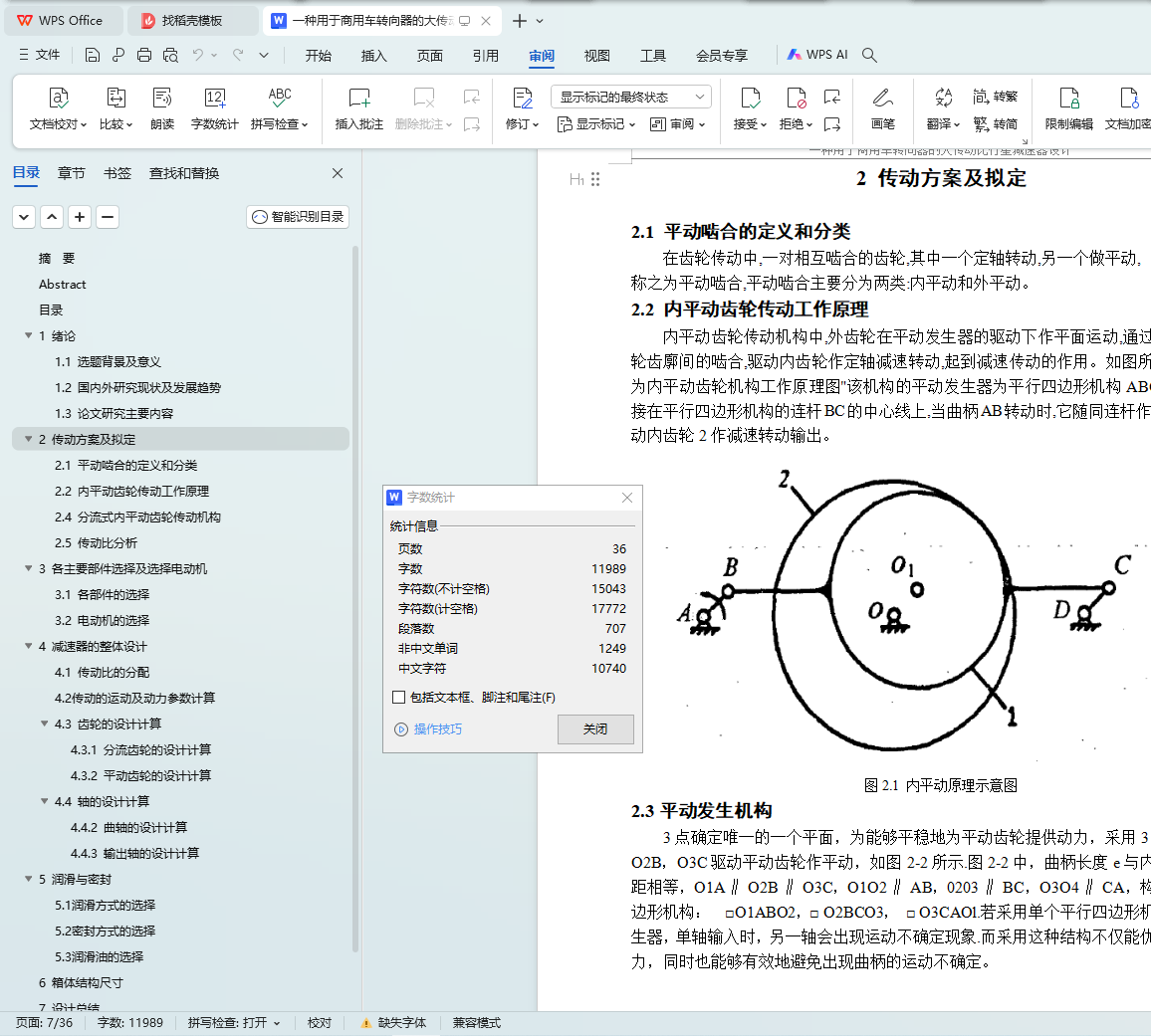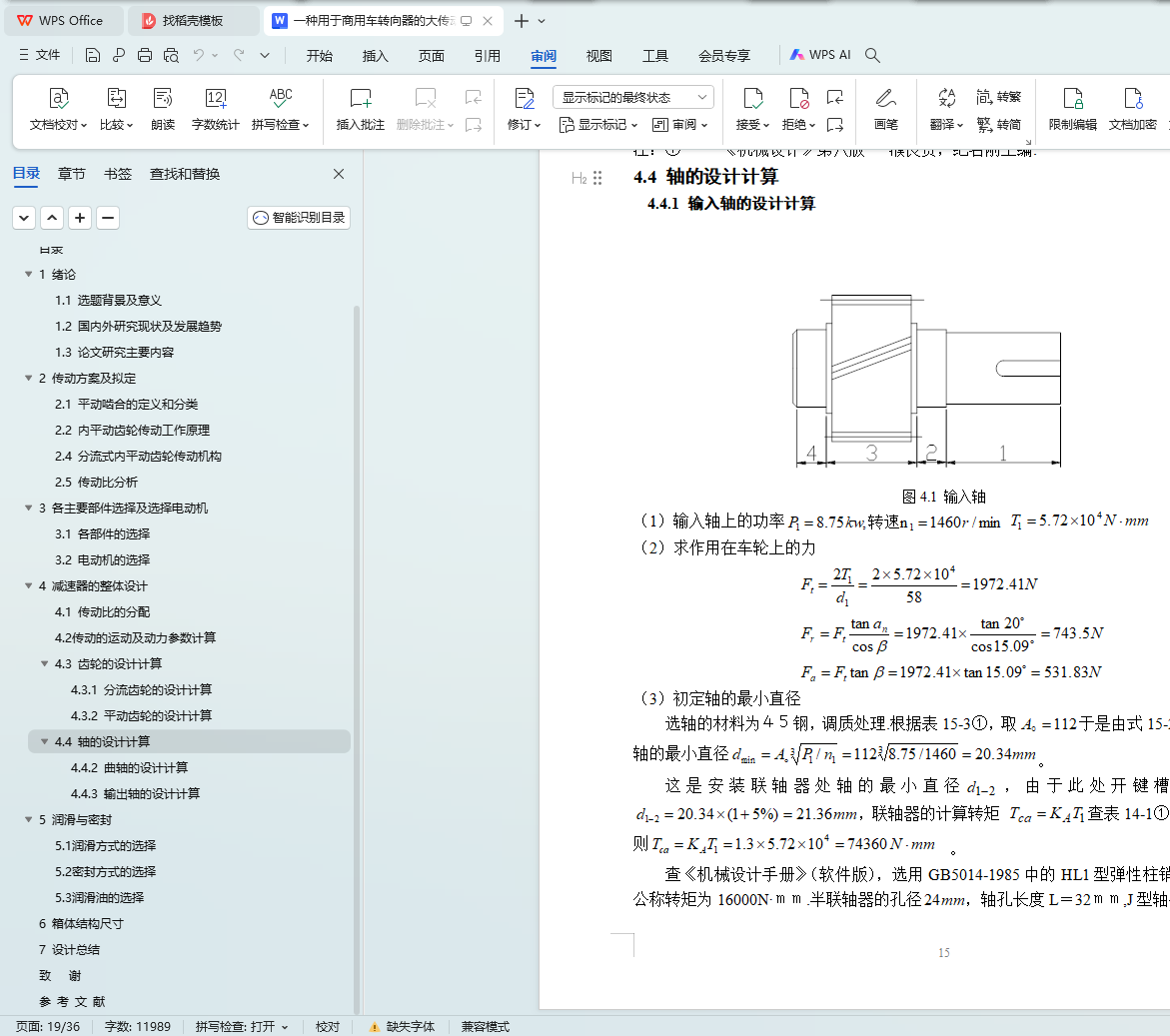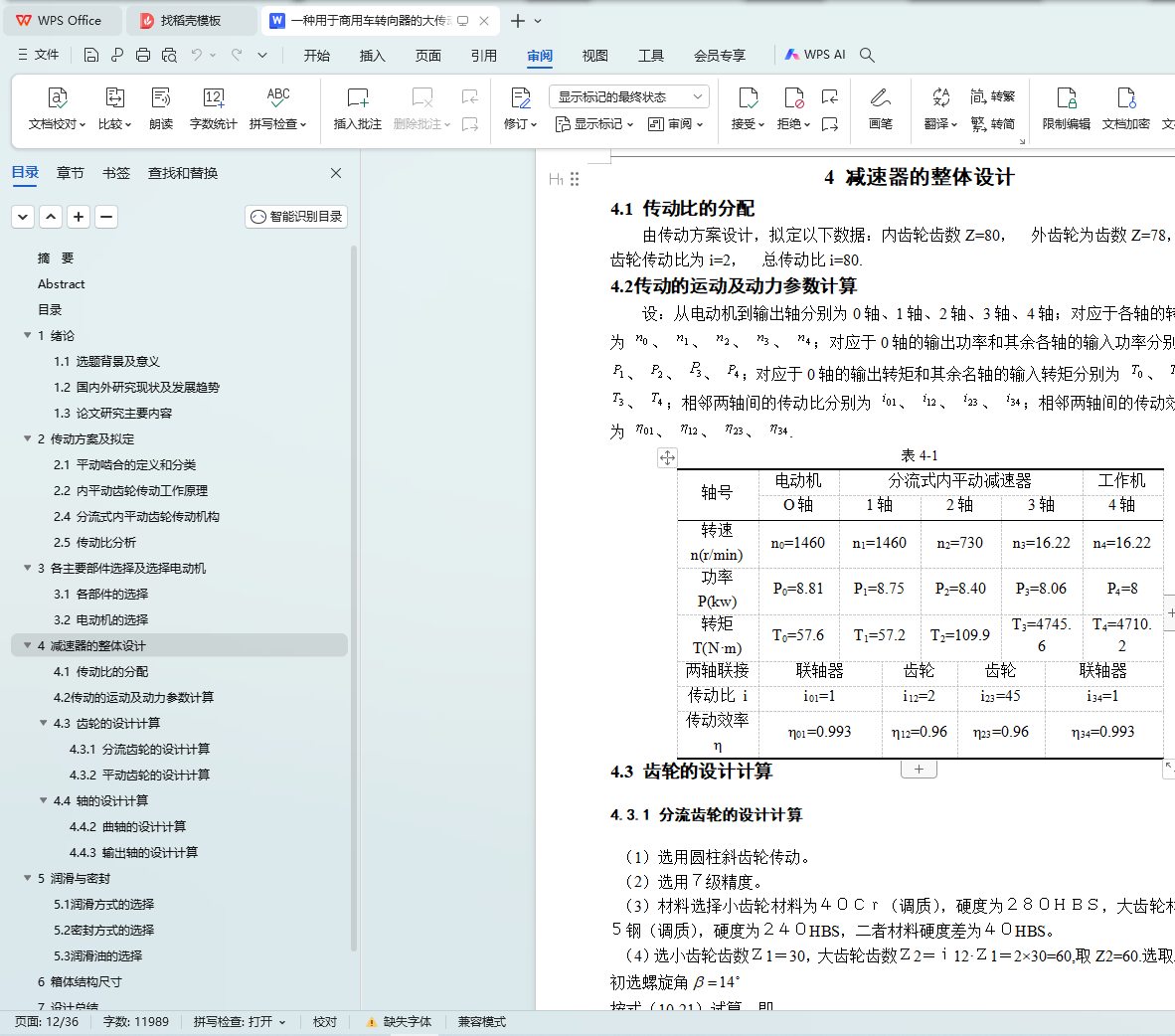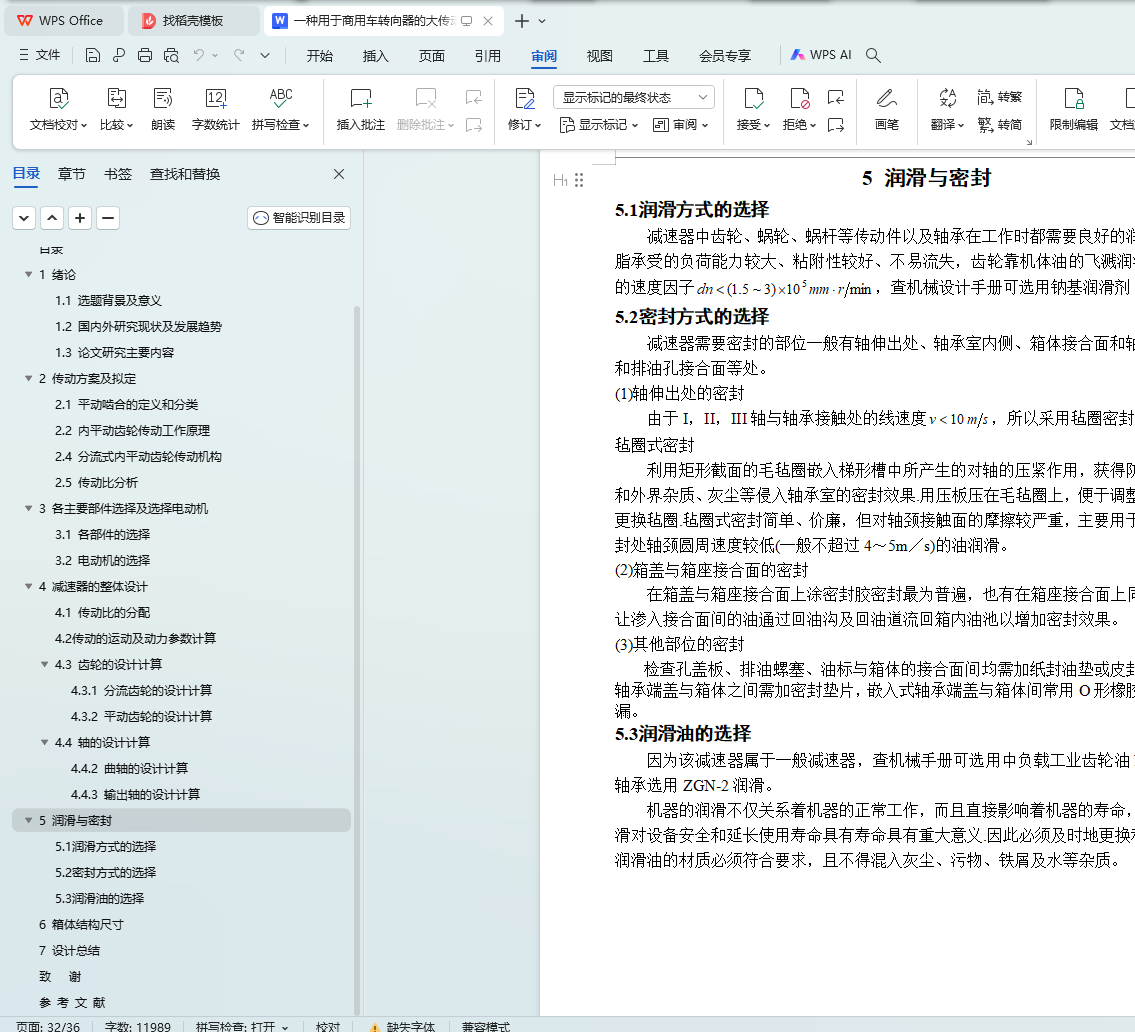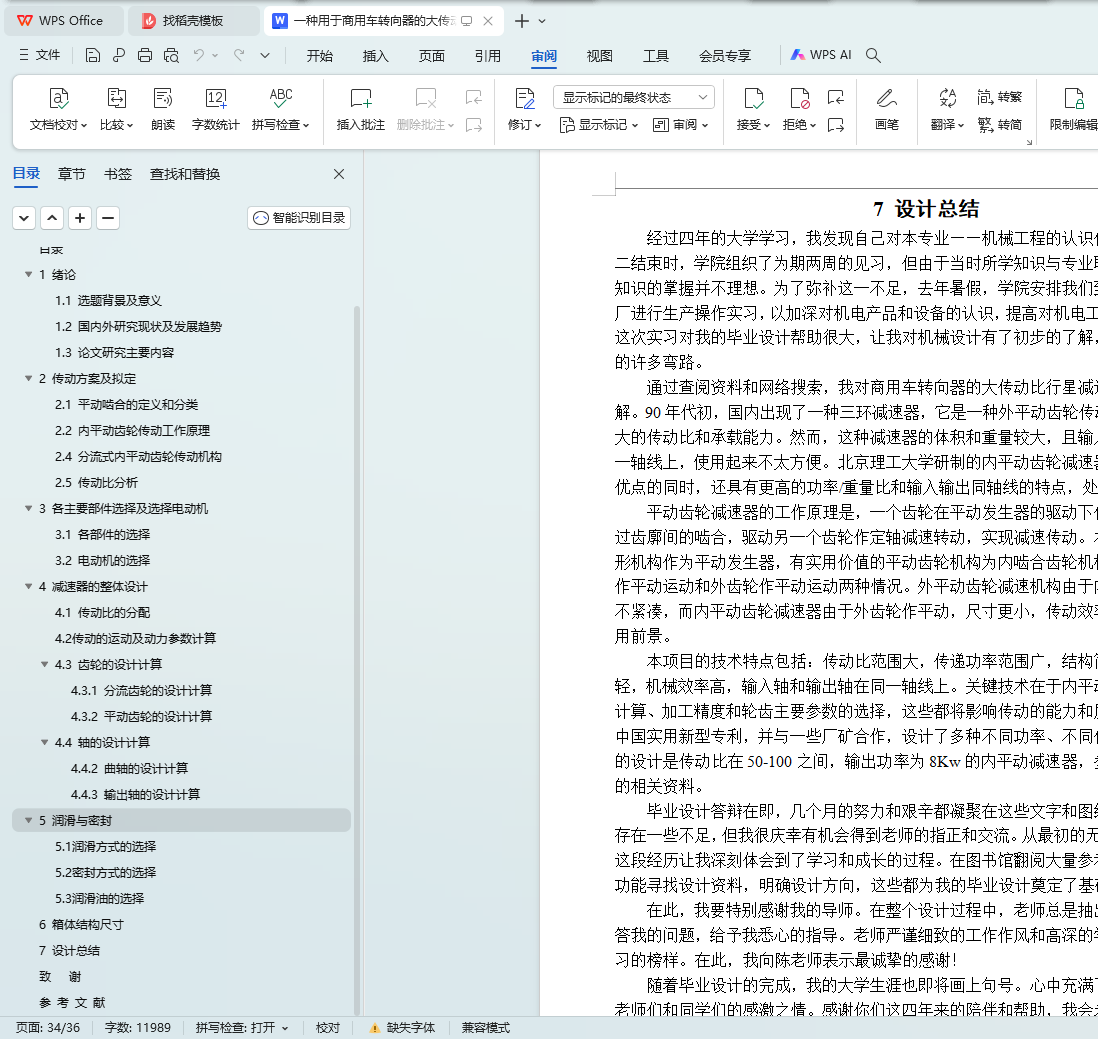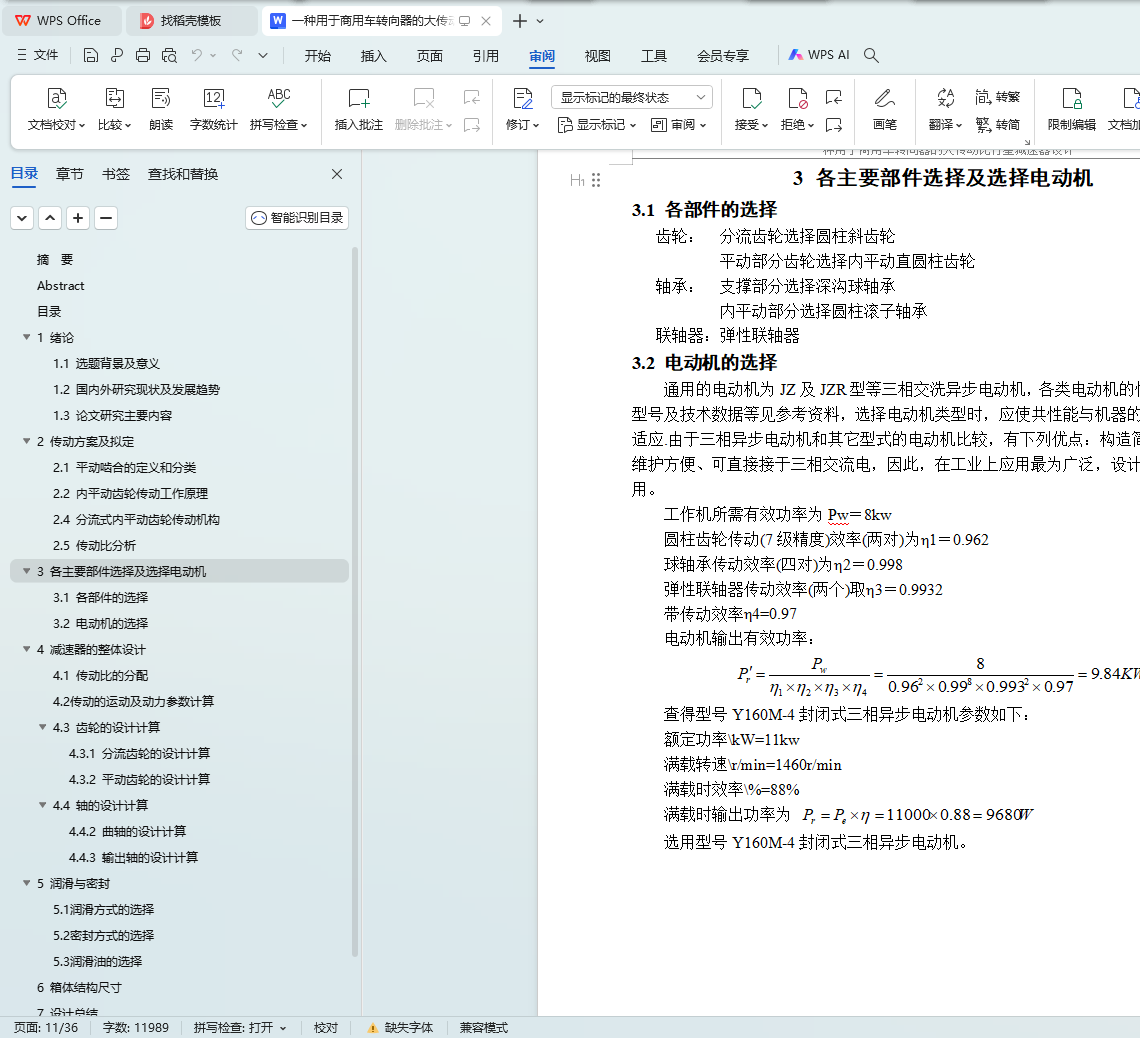摘 要
本文提出了一种新型的大传动比行星减速器设计,专门用于商用车转向器。该设计创新性地引入了分流型内平动齿轮传动机构,其核心为三根偏心轴作为平动发生器。通过对传动比计算公式的推导和分析,本研究揭示了平衡机构惯性力的优化方法,即通过设计啮合点相位差为180°或120°来实现。此外,研究还发现当输入齿轮的齿数为3的倍数时,分流齿轮表现出互换性;而当采用两片平动齿轮且内外齿轮齿数差为偶数,或采用3片平动齿轮且内齿轮齿数为3的倍数时,平动齿轮同样具有互换性。文章还提供了啮合参数的编程计算方法,以便于实际应用中的参数选择和计算。该减速器设计具有承载能力强、传动比范围广(17-300)、体积小、质量轻、输入输出同轴线以及加工安装简便等显著优势,预示着其在商用车转向系统领域的广泛应用潜力。
关键词 :内平动齿轮传动;少齿差齿轮副;传动比;行星减速器;电机
Abstract
This paper presents a new design of large drive ratio planetary reducer specifically for commercial vehicle steering gear. The design innovatively introduces the shunt type internal translation gear transmission mechanism, whose core is three eccentric shafts as the translation generator. By deriving and analyzing the calculation formula of the transmission ratio, this study reveals the optimization method of the inertial force of the equilibrium mechanism, which is realized by designing the engagement point phase difference of 180 or 120. Furthermore, it is found that when the number of teeth of the input gears is a multiple of 3, and when two flat gears are used and the number difference is even, or three flat gears with the number of 3. The paper also provides the programming calculation method of mesh parameters to facilitate parameter selection and calculation in practical applications. The design of the reducer has significant advantages such as strong carrying capacity, wide transmission ratio range (17-300), small volume, light mass, input and output coaxis and simple processing and installation, which indicates its wide application potential in the field of commercial vehicle steering system.
Key words: internal flat gear transmission; less differential gear pair; transmission ratio; planetary reducer; motor
目录
摘 要
Abstract
目录
1 绪论
1.1 选题背景及意义
1.2 国内外研究现状及发展趋势
1.3 论文研究主要内容
2 传动方案及拟定
2.1 平动啮合的定义和分类
2.2 内平动齿轮传动工作原理
2.4 分流式内平动齿轮传动机构
2.5 传动比分析
3 各主要部件选择及选择电动机
3.1 各部件的选择
3.2 电动机的选择
4 减速器的整体设计
4.1 传动比的分配
4.2传动的运动及动力参数计算
4.3 齿轮的设计计算
4.3.1 分流齿轮的设计计算
4.3.2 平动齿轮的设计计算
4.4 轴的设计计算
4.4.2 曲轴的设计计算
4.4.3 输出轴的设计计算
5 润滑与密封
5.1润滑方式的选择
5.2密封方式的选择
5.3润滑油的选择
6 箱体结构尺寸
7 设计总结
致 谢
参 考 文 献
